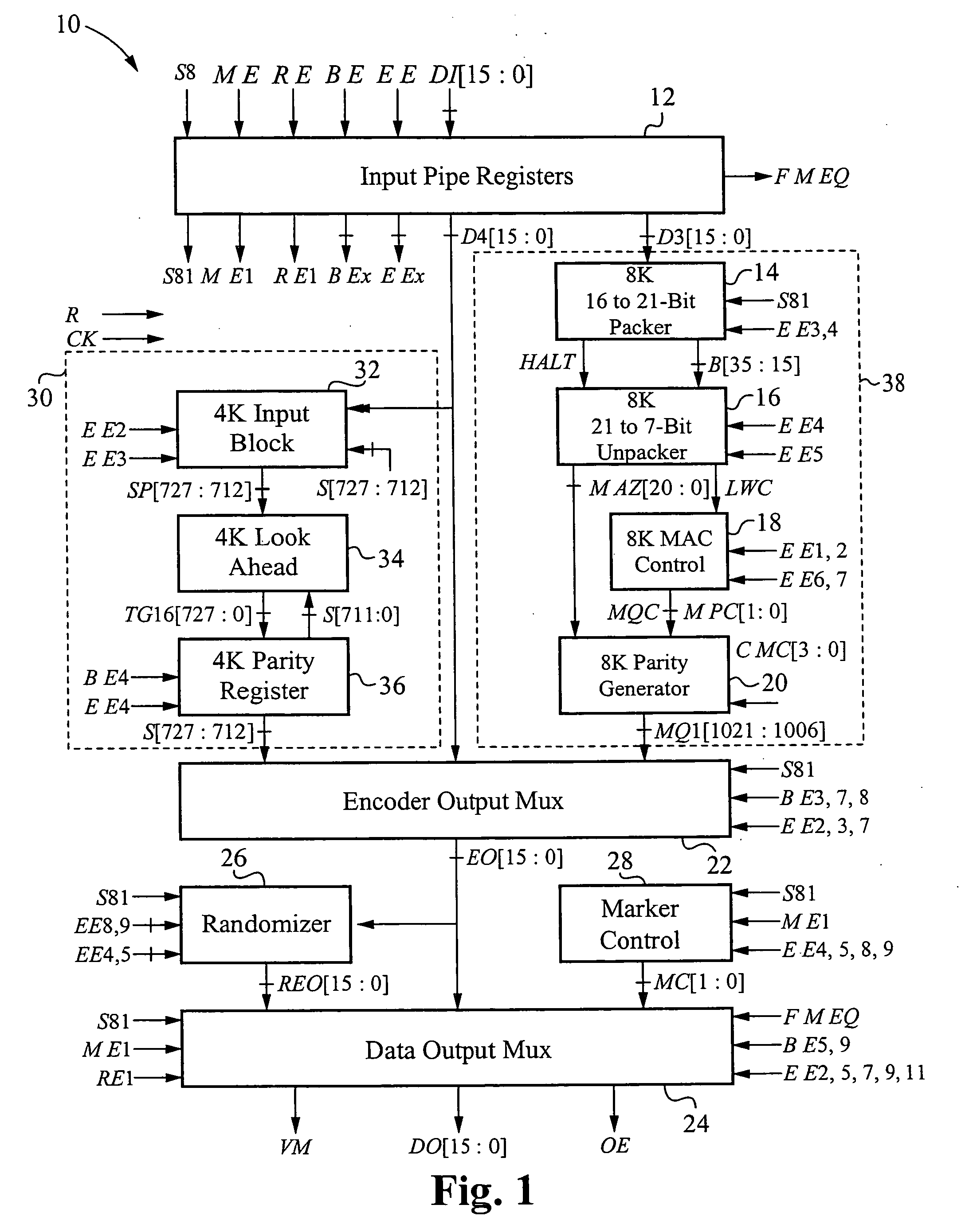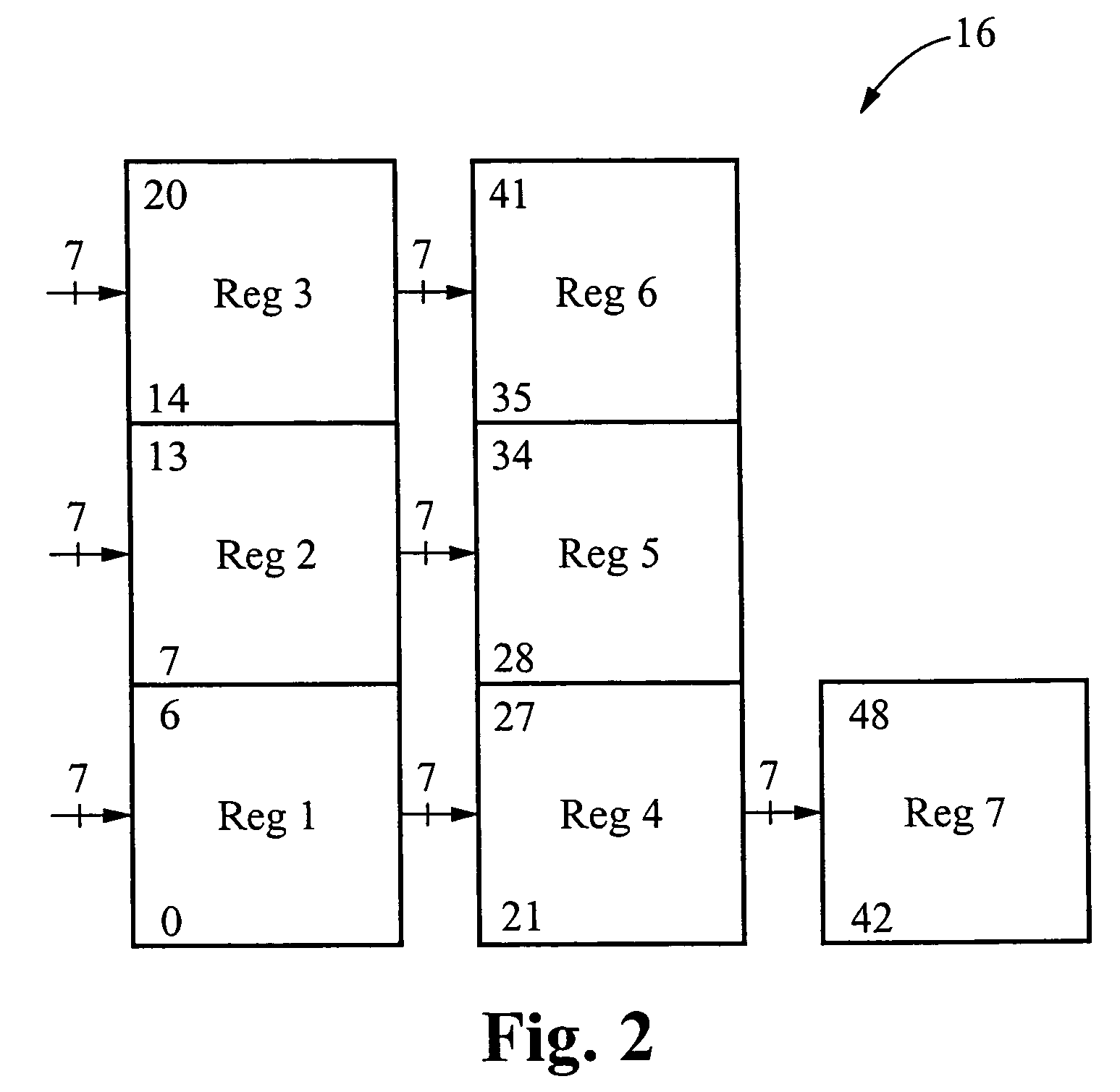Low-density parity-check (LDPC) encoder
a low-density parity-check and encoder technology, applied in the direction of coding, instruments, code conversion, etc., can solve the problems of data corruption, data communication probability error, and the complexity of encoding operation via c=ug still too large for long codes
- Summary
- Abstract
- Description
- Claims
- Application Information
AI Technical Summary
Benefits of technology
Problems solved by technology
Method used
Image
Examples
Embodiment Construction
[0020]Embodiments of the present invention are directed to a radiation tolerant, encoding chip that implements two low-density parity-check (LDPC) codes. The first LDPC code is a (4088,3360) code (4K) which is shortened from a (4095,3367) cyclic code. The second LDPC code is a quasi-cyclic (8158,7136) code (8K). An encoder chip utilizing the present invention can be programmed with other LDPC codes. Also included on the chip is a CCSDS (Consultative Committee for Space Data Systems) standard randomizer as well as a CCSDS standard attached synchronization marker (ASM) section. The architecture for a parity generator and the derivation of the sub-code which enables this architecture is described in detail below.
Code Description
[0021]The (8158,7136) code is shortened from a geometry-based (8176,7154) quasi-cyclic code designed to have an error floor no higher than 10−10 BER (bit error rate). The parent code is specified by a 1022×8176H matrix containing 32 right circulant sub-matrices ...
PUM
 Login to View More
Login to View More Abstract
Description
Claims
Application Information
 Login to View More
Login to View More - R&D
- Intellectual Property
- Life Sciences
- Materials
- Tech Scout
- Unparalleled Data Quality
- Higher Quality Content
- 60% Fewer Hallucinations
Browse by: Latest US Patents, China's latest patents, Technical Efficacy Thesaurus, Application Domain, Technology Topic, Popular Technical Reports.
© 2025 PatSnap. All rights reserved.Legal|Privacy policy|Modern Slavery Act Transparency Statement|Sitemap|About US| Contact US: help@patsnap.com



